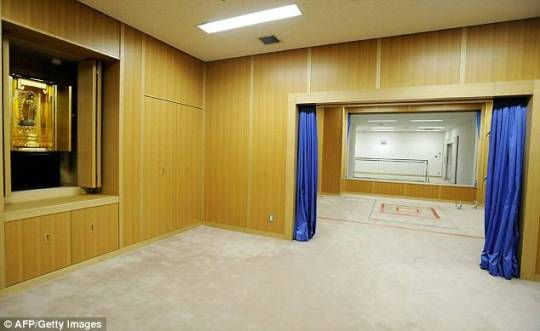The following description of the Eternal Buddha is from The Teaching of Buddha by The Society for the Promotion of Buddhism, Japan’s equivalent to The Gideon’s Bible, which can be found in many hospitals and hotel rooms:
Do not think that the compassion of the Buddha is only for the present life; it is a manifestation of the timeless compassion of the eternal Buddha that has been operative since unknown time, when mankind went astray due to ignorance…
Do not seek to know Buddha by His form or attributes; for neither the form nor the attributes are the real Buddha. The true Buddha is Enlightenment itself…
If someone sees some excellent features of Buddha and then thinks he knows Buddha, his is the mistake of an ignorant eye, for the true Buddha can not be embodied in a form or seen by human eyes. Neither can one know Buddha by a faultless description of his attributes. It is not possible to describe His attributes in human words.
Though we speak of His form, the Eternal Buddha has no set form, but can manifest Himself in any form. Though we describe His attributes, yet the Eternal Buddha has no set of attributes, but can manifest Himself in any and all excellent attributes.
Buddha’s body is Enlightenment itself. Being formless and without substance, it always has been and always will be. It is not a physical body that must be nourished by food. It is an eternal body whose substance is Wisdom. Buddha, therefore, has neither fear nor disease; He is eternally changeless.
Therefore, Buddha will never disappear as long as Enlightenment exists. Enlightenment appears as the light of Wisdom that awakens people into a newness of life and causes them to be born into the world of Buddha (the Pure Land)…
Dharmakaya is the substance of the Dharma; that is, it is the substance of Truth itself. In the aspect of Essence, Buddha has no shape or color, and since Buddha has no shape or color, He comes from nowhere and there is nowhere for Him to go. Like the blue sky, He arches over everything, and since He is all things, He lacks nothing…
The work of Buddha is to manifest in all affairs and on all occasions the pure essence of Dharmakaya (the absolute nature of Buddha); so Buddha’s mercy and compassion flow out from this Dharmakaya in endless life and boundless light, bringing salvation to mankind.
http://www.e4thai.com/e4e/images/pdf/theteachingofbuddha.pdf
Please compare the above description of the Eternal Buddha to Bhikkhu Bodhi’s description of the Dhamma:
Dhamma. The cosmic principle of truth, lawfulness, and virtue discovered, fathomed, and taught by the Buddha; the Buddha’s teaching as an expression of that principle; the teaching that leads to enlightenment and liberation.
In the Buddha's Words: An Anthology of Discourses from the Pali Canon - Bodhi - Google Books
The name Amida means “eternal life” and “infinite light.” Amida is such an important part of traditional Japanese culture that death row inmates visit a shrine to Amida and say their final Nembutsu before undergoing execution:

It is not necessary to hear about deathbed experiences of the Pure Land in order to believe the Pure Land is real, because the Pure Land is the formless realm of Nirvana. This is why Shinran referred to rebirth into the Pure Land as “the birth that is non-birth,” just as the historical Buddha referred to Nirvana as “the unborn.”







